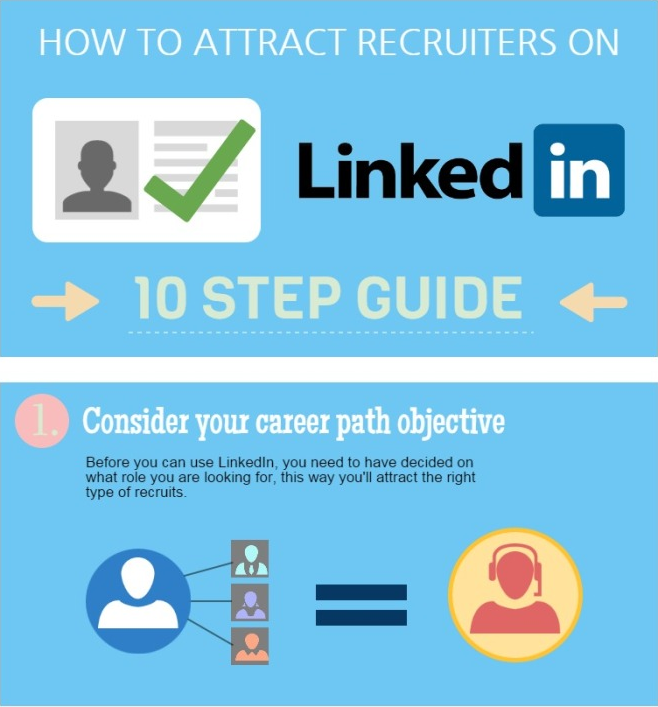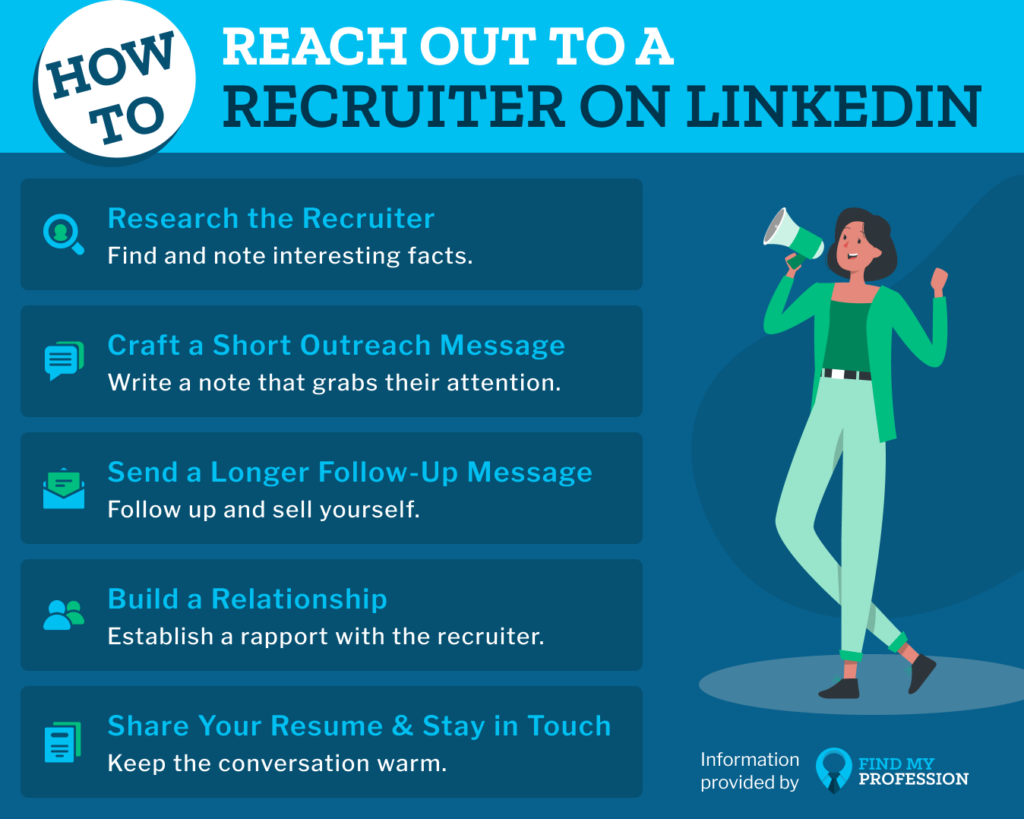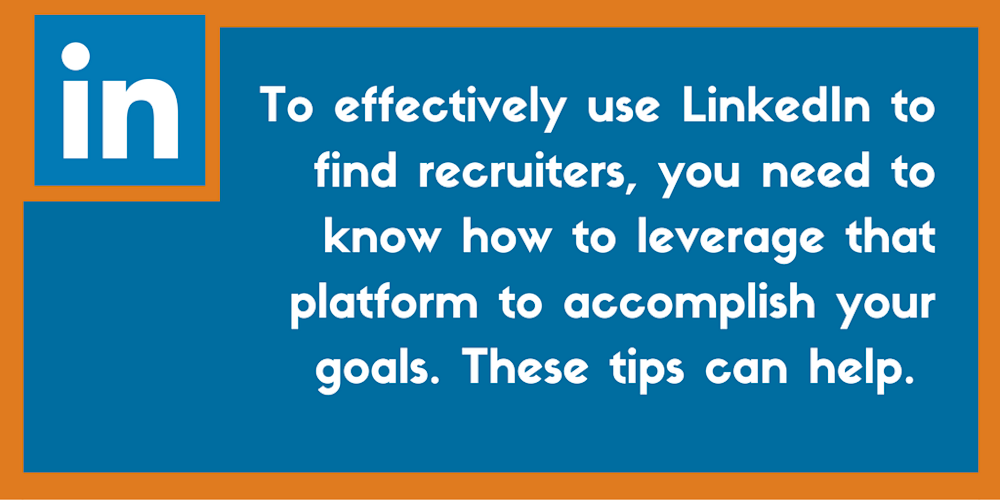LinkedIn has transformed how we connect and network professionally, becoming a powerful recruitment tool for both job seekers and employers. With over 875 million users globally, it offers a vast pool of talent and opportunities. But how do you effectively navigate this platform to find recruiters? Let’s explore some strategies that can help you connect with the right people and make your job search more efficient.
Understanding the Role of Recruiters on LinkedIn

Recruiters on LinkedIn play a pivotal role in bridging the gap between talent and opportunity. They are not just gatekeepers but also guides and advocates for candidates. Here's a breakdown of their functions:
- Talent Sourcing: Recruiters actively search for candidates who match specific job criteria. They use advanced search filters and algorithms to find profiles that align with their needs.
- Building Relationships: Many recruiters use LinkedIn to foster relationships with potential candidates. They often engage with users by liking, commenting, or sharing content, creating a more personal connection.
- Market Insights: Recruiters have a pulse on industry trends and salary benchmarks. They can provide valuable insights, helping candidates understand their market value.
- Job Postings: Recruiters frequently post job openings, making it easier for candidates to discover opportunities that fit their skills and aspirations.
- Interview Preparation: Some recruiters offer tips and advice on how to prepare for interviews, helping candidates present their best selves.
Understanding these roles is crucial when reaching out to recruiters. They aren’t just looking for resumes; they want to know your story and how you fit into their vision. Make your profile stand out by highlighting your achievements and career goals, and don't hesitate to engage with their content. A simple comment or a thoughtful message can go a long way in making a memorable impression.
Ultimately, leveraging LinkedIn to connect with recruiters is about building relationships and showcasing your unique value. By understanding their role, you can tailor your approach, making it easier for them to see why you should be their next candidate of choice!
Also Read This: How to Add LinkedIn to Your Outlook Account
3. Optimizing Your LinkedIn Profile for Recruiter Searches

When it comes to attracting the attention of recruiters on LinkedIn, your profile is your first impression. It’s not just about filling in your past job titles; it's about strategically showcasing your skills and experiences to stand out from the crowd. Here are some tips to optimize your profile effectively:
- Headline Magic: Your headline is prime real estate. Instead of just stating your job title, consider including keywords that reflect your skills and aspirations. For example, instead of "Software Engineer," try "Innovative Software Engineer | AI Enthusiast | Problem Solver."
- Crafting a Compelling Summary: Your summary is your chance to tell your story. Use a friendly, conversational tone to describe your professional journey, key accomplishments, and what you’re passionate about. Aim for about 3-4 short paragraphs that highlight your unique value.
- Showcase Your Skills: Make sure to list relevant skills that recruiters might search for. LinkedIn allows you to add up to 50 skills; prioritize those that align with your career goals. Don’t forget to ask for endorsements from colleagues to boost credibility!
- Experience Matters: When detailing your work experience, use bullet points to make your accomplishments stand out. Focus on quantifiable results — for instance, "Increased sales by 30% in Q2" rather than just listing responsibilities.
- Professional Photo: A clear, professional photo can significantly enhance your profile. Choose a background that reflects your industry, and ensure your expression is friendly and approachable.
Remember, recruiters are looking for candidates who not only fit the job description but also align with their company culture. So, be authentic and let your personality shine through!
Also Read This: How to Mark a Job as Applied on LinkedIn and Track Your Applications
4. Using Advanced Search Filters to Find Recruiters

Finding the right recruiters on LinkedIn can feel overwhelming, but the platform’s advanced search features can help narrow down your options effectively. Here’s how to use these filters to your advantage:
- Keyword Search: Start with specific keywords related to your industry or desired role. For example, if you’re in finance, try phrases like "finance recruiter" or "investment hiring manager." This helps refine your search results.
- Location Filtering: If you’re open to relocation, use the location filter to find recruiters in specific areas. This can be particularly helpful if you’re targeting a city known for opportunities in your field.
- Company Filters: Want to work at a specific company? Use the company filter to find recruiters who are affiliated with those organizations. This can provide insights into their hiring practices and culture.
- Industry and Function Filters: Tailor your search by selecting specific industries and functions. For instance, if you’re looking for tech recruiters, filter by the technology industry to get the most relevant results.
- Connections: Consider filtering your search by your first-degree connections. Recruiters are often more responsive to connections that share mutual contacts, so this can increase your chances of engagement.
Once you've applied these filters, take the time to personalize your connection requests. A brief message explaining why you’d like to connect can go a long way in establishing rapport. For instance, you might mention a recent job opening they posted or express admiration for their work in the industry. Happy searching!
Also Read This: How to Merge Two LinkedIn Accounts
5. Building Connections with Recruiters on LinkedIn

Connecting with recruiters on LinkedIn is more than just clicking “Connect.” It's about establishing a relationship that can lead to exciting job opportunities. Here are some effective strategies to build those connections:
- Personalize Your Connection Requests: Always send a personalized message when sending a connection request. Mention a common interest, such as a shared group or an event you both attended. For example, you might say, “Hi [Recruiter’s Name], I noticed we’re both members of the [Group Name]. I’d love to connect and share insights!”
- Follow Up: After connecting, send a thank-you message. This little gesture can go a long way. You might say, “Thanks for connecting! I’m excited to learn more about opportunities in [Industry].” It opens the door for further communication.
- Engage with Their Content: Recruiters often post valuable content related to their industry. By liking, commenting, or sharing their posts, you not only stay informed but also get on their radar. For instance, if a recruiter shares an article about interview tips, comment with your perspective or add a question that shows your interest.
Remember, building connections isn’t just about what you can get; it’s about what you can offer as well. Share insights, comment on their posts, and contribute to conversations. This creates a mutually beneficial relationship.
Also Read This: How to Change Your LinkedIn Email Address
6. Engaging with Recruiters through Content and Networking
Engaging with recruiters involves more than just sending them a message; it’s about being active and visible in your field. Here are some strategies to effectively engage:
- Create and Share Relevant Content: Showcase your expertise by sharing articles, blog posts, or even your thoughts on industry trends. For example, if you work in digital marketing, post about the latest SEO strategies or case studies of successful campaigns.
- Participate in LinkedIn Groups: Join groups relevant to your industry and engage in discussions. This not only helps you build a network but also establishes you as a knowledgeable member of the community. For example, if you're in tech, participating in a group focused on software development can connect you with like-minded professionals and recruiters.
- Attend Online Networking Events: Many recruiters host webinars or virtual networking events. Attend these events and be proactive about asking questions or starting conversations. This can help you stand out. For instance, if you attend a session on job market trends, don’t hesitate to ask the recruiter about upcoming opportunities in your field.
Finally, remember to be genuine in all your interactions. Building a network takes time, but being consistent and authentic will pay off in the long run. As you engage more, you’ll find recruiters will start reaching out to you as well.
Also Read This: Do People Still Use LinkedIn? Trends in Professional Networking
7. Monitoring Trends and Updates in Your Industry
Staying updated on industry trends and news is crucial for job seekers, especially on a platform like LinkedIn, where professionals engage in discussions and share insights. By keeping your finger on the pulse of your industry, you can tailor your job search and networking strategies effectively. Here’s how to go about it:
- Follow Influencers: Identify and follow key influencers in your field. These are individuals who often share valuable insights, trends, and resources. Engaging with their content can also increase your visibility.
- Join Relevant Groups: LinkedIn groups are goldmines for discussions about industry trends. Participate actively; ask questions, share your insights, and connect with group members.
- Use LinkedIn’s Content Features: LinkedIn allows you to follow hashtags related to your industry. This way, you’ll see a curated feed of posts that are relevant to your interests and career goals.
- Engage with Company Pages: Follow companies you’re interested in. They often share insights about their sectors, including trends, challenges, and innovations. This not only helps you stay updated but also prepares you for interviews.
Additionally, consider setting up Google Alerts for specific keywords related to your industry. This will send you updates directly to your inbox, allowing you to stay informed without constantly searching for news. You can then share interesting articles on LinkedIn with your thoughts added, showcasing your knowledge and engagement with current trends.
By being proactive in monitoring these trends, you can not only enhance your job search strategy but also position yourself as a knowledgeable candidate in conversations with recruiters. Remember, the more informed you are, the more confident you’ll feel in networking and interviews.
8. Conclusion: Making the Most of LinkedIn in Your Job Search
LinkedIn is more than just a digital resume; it’s a dynamic platform that can significantly enhance your job search when used effectively. By implementing the strategies we’ve discussed, you can maximize your online presence, connect with recruiters, and ultimately land your dream job.
Here’s a quick recap of what you can do:
- Optimize Your Profile: Ensure your profile is complete, with a professional photo, compelling summary, and detailed work experience.
- Network Strategically: Connect with recruiters, industry professionals, and peers. Personalize your connection requests and engage with their content.
- Showcase Your Expertise: Share articles, write posts, and engage in discussions that highlight your knowledge and passion for your field.
- Utilize Job Search Features: Use LinkedIn’s job search tool to filter positions that align with your skills and interests. Set job alerts to stay on top of new opportunities.
- Stay Updated: Keep an eye on industry trends to inform your job search and discussions with recruiters.
Remember, your job search is a journey. While it may take time and persistence, leveraging LinkedIn effectively can open doors and connect you with opportunities you may not have thought possible. So dive in, engage authentically, and make LinkedIn work for you!
 admin
admin








